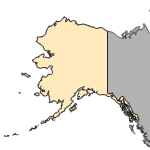Procambarus simulans
(Southern plains crayfish)
Crustaceans-Crayfish
Native Transplant |
|
Common name: Southern plains crayfish
Synonyms and Other Names: Cambarus simulans, Cambarus gallinus, Cambarus baumgartneri
Taxonomy: available through
www.itis.gov
Identification: Adult P. simulans can be an olive green to a light blue-gray color with occasional highlights of red on the tail. Their claws are usually lighter in color than their body. The claws have tubercles (elevated bumps along exoskeleton) that line the palm and dactyl (moveable finger of the claw) areas. Along the dorsal side of the abdomen there are two rows of darker color that run horizontally. The ventral side of the body is a light cream color. Procambarus simulans have an elliptical carapace that narrows to the rostrum which lacks any lateral spines (Morehouse and Tobler 2013). In breeding males, also known as Form I males, gonopods which are specialized reproductive organs along the claws of the crayfish, end in four protrusions, known as processes. (Reimer and Clark 1974).
Size: Adults can reach up to 100 mm (or about 4 inches) in length (Morehouse and Tobler 2013)
Native Range: Procambarus simulans is found throughout the Southern plains including Texas, Louisiana, Oklahoma, New Mexico, Kansas, Colorado, and Arkansas (Hobbs 1974).



|

Alaska |

Hawaii |

Puerto Rico &
Virgin Islands |

Guam Saipan |
Hydrologic Unit Codes (HUCs) Explained
Interactive maps: Point Distribution Maps
Nonindigenous Occurrences:
Miles City State Fish Hatchery, Custer County, Montana (Schmidt et al. 2023).
Table 1. States with nonindigenous occurrences, the earliest and latest observations in each state, and the tally and names of HUCs with observations†. Names and dates are hyperlinked to their relevant specimen records. The list of references for all nonindigenous occurrences of Procambarus simulans are found here.
Table last updated 11/23/2024
† Populations may not be currently present.
Ecology: Procambarus simulans will occupy both stagnant and flowing bodies of water. This species is a burrower and is often found within the substrate (Hobbs 1974). P. simulans prefer to burrow in ditches and pools of water within the flood plain of rivers (Reimer and Clark 1974). This species is capable of living in burrows that do not have any surface water (Cordeiro 2004). Members of the genus Procambarus are generalist feeders and often prey upon other invertebrates such as aquatic snails (Alexander and Covich 1991). The majority of breeding for this species mainly occurs in the fall and winter months. In Oklahoma, females have been observed carrying 89-156 young (Morehouse and Tobler 2013).
Means of Introduction: The exact means of introduction of P. simulans to Montana is unknown. However, many pathways of invasive crayfish introductions have been documented including the pet trade, intentional introductions as forage, and bait releases (Schmidt et al. 2023).
Status: Procambarus simulans is established in Miles City Sate Fish Hatchery in Custer County, Montana. In 2021, sampling of the hatchery revealed multiple stage classes of P. simulans including reproductive males (Schmidt et al. 2023). This species is often difficult to detect due to their burrowing habits (Reimer and Clark 1974).
Impact of Introduction: The impacts of this species are currently unknown. The absence of data does not equate to lack of effects. It does, however, mean that research is required to evaluate effects before conclusions can be made.
References: (click for full references)
Alexander, J.E., Jr., and A.P. Covich. 1991. Predator avoidance by the freshwater snail Physella virgata in response to the crayfish Procambarus simulans. Oecologia 87:435-442. https://link.springer.com/article/10.1007/BF00634603.
Hobbs, H.H., Jr. 1974. A Checklist of the North and Middle American Crayfishes (Decapoda: Astacidae and Cambaridae). Smithsonian Contributions to Zoology, Number 166. http://www.sil.si.edu/smithsoniancontributions/Zoology/pdf_hi/SCTZ-0166.pdf.
Morehouse, R. L., and M. Tobler. 2013. Crayfishes (Decapoda: Cambaridae) of Oklahoma: identification, distributions, and natural history. Zootaxa 3717(2):101-157. https://doi.org/10.11646/zootaxa.3717.2.1.
Reimer, R.D., and W.J. Clark. 1974. Decapod crustaceans of the Navasota river system in central Texas. The Southwestern Naturalist 19(2):167-178. https://www.jstor.org/stable/3670277?seq=1.
Schmidt, S.A., D.A. Schmetterling, I.M. Barnes, and S.B. Adams. 2023. The first occurrence of the southern plains crayfish Procambarus simulans (Faxon, 1884) documented in Montana, USA. BioInvasions Records 12(1):272-283. https://doi.org/10.3391/bir.2023.12.1.23.
Other Resources:
Cordeiro, J. 2004. Procambarus simulans. https://explorer.natureserve.org/Taxon/ELEMENT_GLOBAL.2.107398/Procambarus_simulans. Created on 10/18/2004. Accessed on 02/29/2024.
IUCN 2024. The IUCN Red List of Threatened Species. Version 2023-1. <https://www.iucnredlist.org>2024.
Author:
Stratton, L.D.
Revision Date: 5/23/2024
Peer Review Date: 5/17/2024
Citation Information:
Stratton, L.D., 2024, Procambarus simulans: U.S. Geological Survey, Nonindigenous Aquatic Species Database, Gainesville, FL, https://nas.er.usgs.gov/queries/FactSheet.aspx?speciesID=3867, Revision Date: 5/23/2024, Peer Review Date: 5/17/2024, Access Date: 11/23/2024
This information is preliminary or provisional and is subject to revision. It is being provided to meet the need for timely best science. The information has not received final approval by the U.S. Geological Survey (USGS) and is provided on the condition that neither the USGS nor the U.S. Government shall be held liable for any damages resulting from the authorized or unauthorized use of the information.